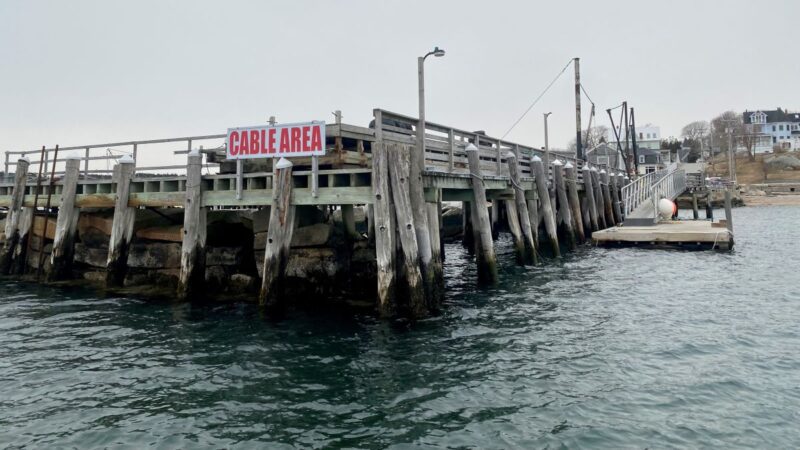The news reports were glowing: A planned microgrid on Isle au Haut could “hold the answer to the future of electricity,” wrote ensia, an environmental media outlet based in Minnesota. It could one day “be a model for the entire nation,” according to another national broadcast.
The project, depicted in 2020 as being on the verge of installation, would include solar panels to generate energy and supercapacitors and heat pumps to store it. That hardware would be accompanied by state-of-the art software that would decide when it was most cost-effective and efficient to store and release power.
No longer, the media reported, would the Maine island outpost be tethered to the mainland by an old-fashioned, underwater electrical cable.
Reality on Isle au Haut proved much more complicated.
While the Isle au Haut Electric Power Company did install a few heat pumps and has solar panels sitting in storage, the board has decided to move away from the microgrid, supercapacitor storage plan.
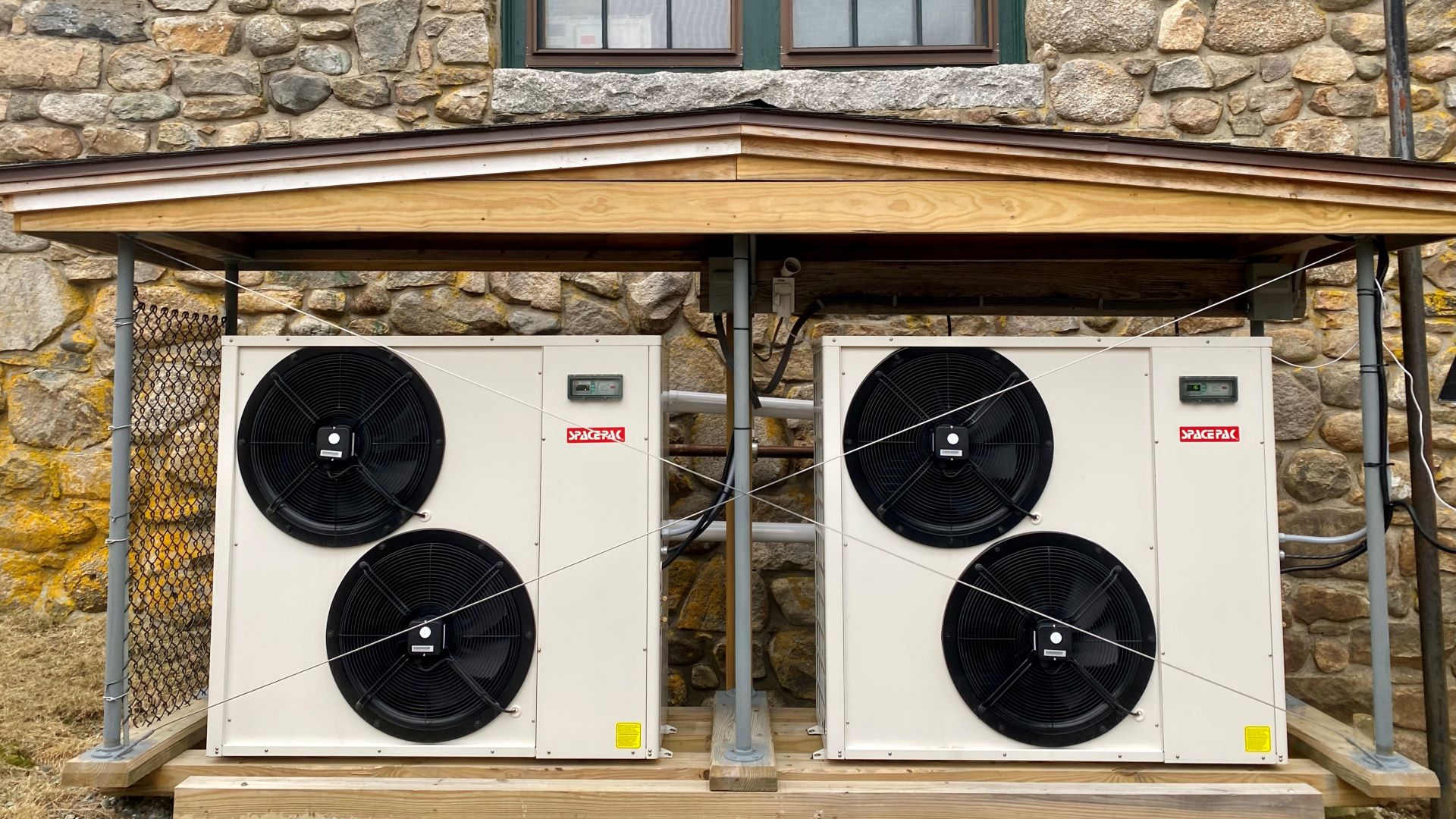
It is looking much more seriously into simply replacing the cable connecting it to the mainland grid, in large part due to concerns over reliability and unproven technology.
“I think what you could say is we’re in a period of reset right now,” said Bill Chamberlain, president of the power company’s Board of Directors. “We’re resetting to make our goals technologically and financially attainable to create reliable, resilient power for the island community.”
A microgrid’s allure
Islands face distinct challenges when it comes to providing electricity for their residents. Isle au Haut is in a better position than many: Its relatively close proximity (seven miles south of the mainland) meant it was possible for an inch-and-a-half diameter cable to be laid along the ocean floor to Stonington, where the island draws power from the larger grid.
But that cable, sunk into the mud in the fall of 1983, is more than two decades past its anticipated life span, and in 2015, island residents got serious about what they would do if it failed. A failure would be catastrophic. While the island has diesel generators to run for backup power, using them as the main source of power would increase energy costs that are already roughly three times higher than on the mainland.
The board of the Isle au Haut Electric Power Company, a private, non-profit co-op, began looking at options. Many residents expressed an interest in incorporating wind or solar into the system. Nearby Vinalhaven had recently installed three wind turbines to offset its power use, and the cost of solar panels was falling.
Among those options was the installation of a microgrid. Modern microgrids can have multiple power generation sources (diesel, grid power, solar, wind), and can be “fully islanded,” meaning they operate without connection to a mainland grid or they can be linked to a larger system. Some include energy storage; others do not.
The idea of an islanded microgrid with renewable energy generation and storage held a lot of appeal. Not only would it reduce the island’s dependence on fossil fuels, but it would insulate the community from fluctuating energy prices that were likely to increase going forward.
There was a catch, however. The island, which has a year-round population of 40 that swells to 140 in the summer, was in the somewhat distinct position of having most of its energy use occur in the summer, rather than in winter, as is typically the case on the mainland. Building a system sized to meet the high demand in summer would mean a lot of excess power in the winter.
“That made renewables problematic,” said Jim Wilson, then-president of the electric company’s board, who was instrumental in drawing up the plans. Storing excess winter energy would be key.
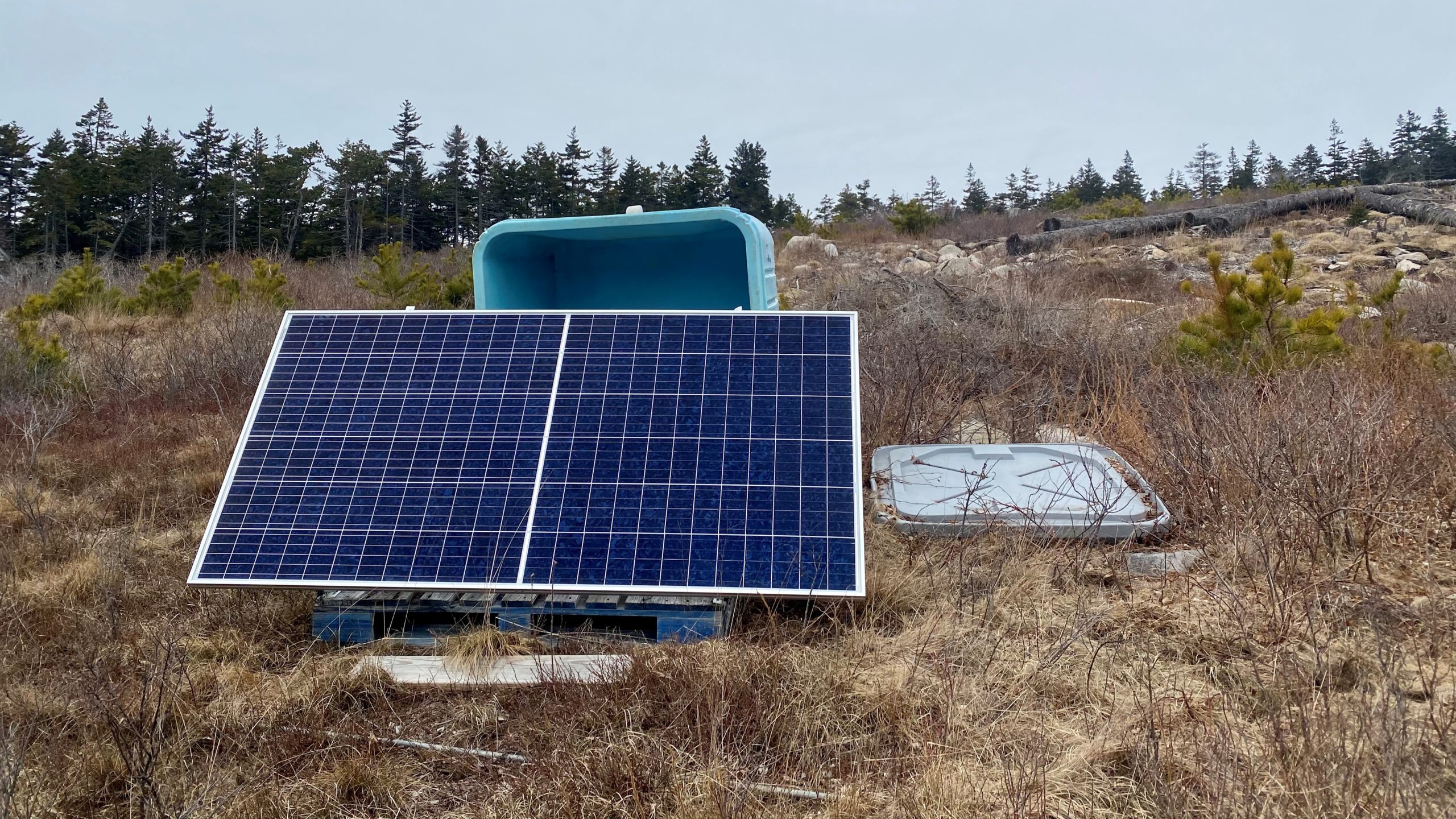
The power company considered lithium ion batteries as storage, but the way they would need to be used on Isle au Haut meant a lifespan of less than a decade — not long enough, said Wilson, considering they cost hundreds of thousands of dollars to replace. That was too much for a company that brings in less than $140,000 a year in revenue.
Eventually the board, with guidance from outside engineers, began looking at supercapacitors, devices that can store and release energy quickly. Supercapacitors don’t degrade as fast as other types of batteries, but they haven’t yet been used in microgrids because they present other problems: They are bulky, don’t store energy for long and leak charge over time, among other issues.
Kilowatt Labs, a company based in New York, said it had solved these problems, and engineers working with the Isle au Haut board on design concepts thought supercapacitors could provide a viable solution to the storage problem.
Wilson and the engineers eventually came up with a plan involving solar panels for energy generation coupled with storage in the form of supercapacitors and air-to-water heat pumps. The heat pumps would soak up extra solar production when the amount of electricity produced was higher and the needs of the island were lower, such as in the winter. The cable could be used to send energy back and forth from the mainland grid until it failed, and diesel generators would provide backup.
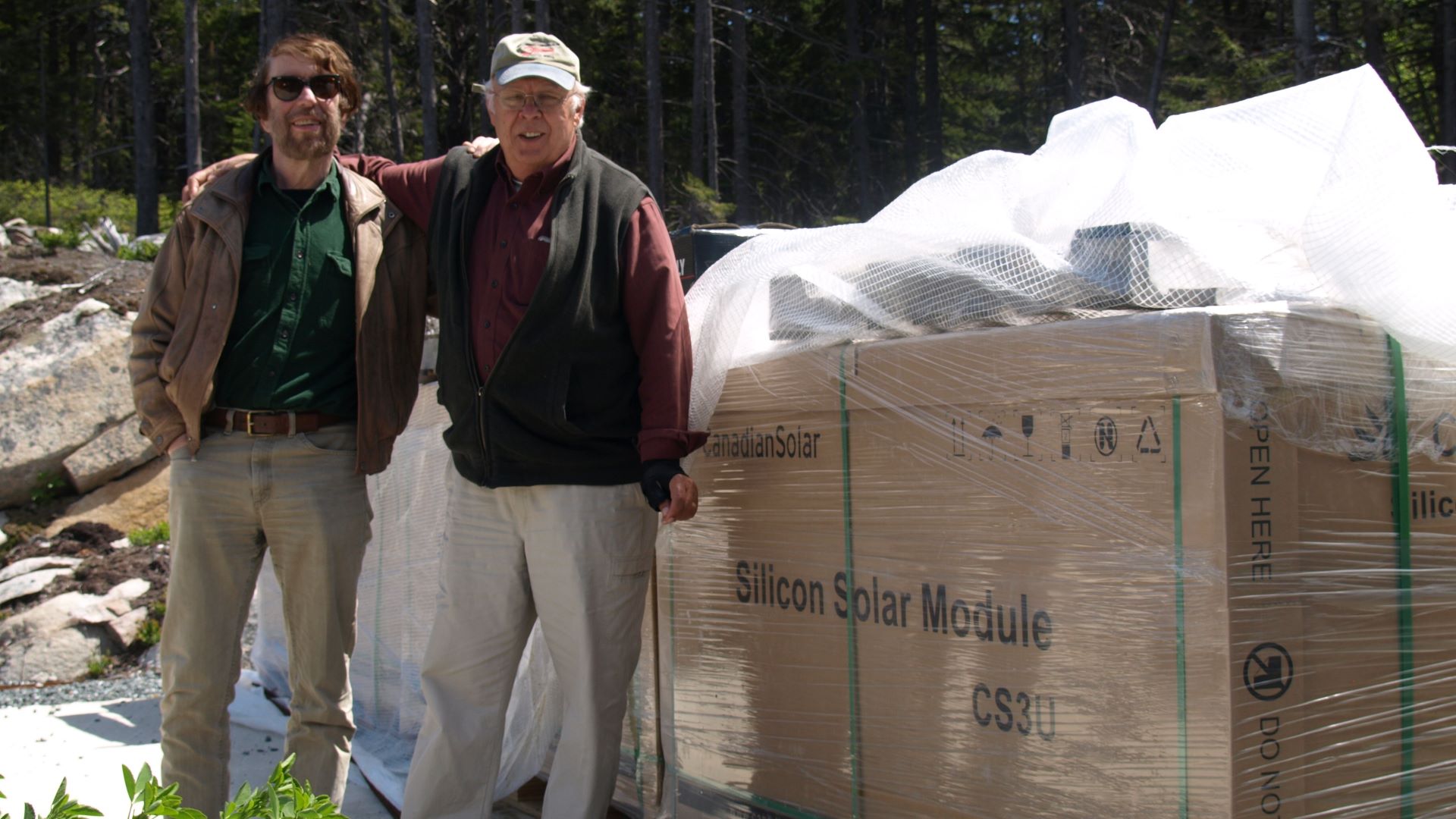
What made the plan unique was that the system would be complemented by software, designed by Dynamic Grid, that would balance energy supply and demand based on the real-time cost of electricity. That would allow the heat pumps to store and release energy when it was most cost-effective and efficient to do so.
Media coverage complicates plans
This was around the time the media came calling. Articles trumpeted the system as the “next, next grid,” a possible model for the nation and the world. Many indicated that the microgrid’s implementation was imminent.
There was just one problem: The board hadn’t yet voted to approve the idea.
“Some of the news reports inaccurately portrayed a plan that… made it sound like it was in place,” said board President Chamberlain.
The news reports hurt the prospects for the project, said Isle au Haut Electric Power Company Manager Bryan Carroll. The attention made it difficult to get bids from businesses that already thought the plan and the companies being named meant the project was a done deal.
The public reports also may have confused and frustrated residents who were still interested in having the cable replaced or weren’t fully on board with the microgrid proposal. Many islanders were wary of having no connection to the mainland grid or of using technology that wasn’t yet in place anywhere else.
“The idea of using batteries and not being connected to the mainland grid was very disturbing to some people,” said Wilson, who blamed himself for not having the energy (he was having heart trouble) to help his island neighbors feel comfortable with the plans.
High cost, reliability issues
Isle au Haut is not the only Maine island community that’s had trouble integrating renewables and storage in the way many had hoped. Reliability is often the chief consideration for such isolated places, and much of the technology is still too new for many to feel comfortable with it.
“Islands are not guinea pigs,” said Emma Wendt, community development officer for the Island Institute, which supports island communities on a variety of issues.
There’s also the higher cost of building out at sea, where materials have to be barged in and roads may be too narrow to accommodate certain construction equipment.
“It’s really expensive to build on islands,” said Wendt. The electric company on Matinicus explored solar with storage and a diesel generator backup, but bids came in “too high compared to their diesel generators, which is really unfortunate,” said Wendt. “They’re not necessarily dropping the whole thing altogether, but they’re waiting.”
Monhegan, which also looked into renewables, ultimately chose to upgrade to more efficient diesel microturbines, which are “90 percent cleaner” than the ones that were in place. It did include a 12.65 kW solar energy system on the power district’s roof.
Vinalhaven, one of the first islands in Maine to incorporate renewables, has had three wind turbines producing power since 2009. They produce as much energy as the system uses in a year, but they haven’t been without their complications. Maintaining and operating the turbines has meant a lot of extra responsibility and administrative work, Chip Farrington, general manager of the Fox Islands Electric Co-op, which manages power for Vinalhaven and North Haven, told the Island Institute in 2016.
“A developer has trained people and large projects, with a staff on site to assist with operations. In our case, we have five linemen,” said Farrington. “Administratively, there were other responsibilities brought on. Selling [Renewable Energy Credits], keeping accounting records, insurance coverages, operational records, things like that. We have to keep sound data, download, log and report it. Everyone has adapted well, but it is a lot of additional work.”
Other hurdles have increased costs: A group of residents unhappy with the noise of the turbines sued the co-op, which resulted in more than $1 million in legal fees, according to Farrington’s interview with the Island Institute. The case was ultimately dismissed, but the legal fees temporarily increased ratepayers’ bills.
The Vinalhaven co-op has maintained a cable connection to the mainland grid, in part to help supplement its power usage in the summer. Electricity use (similar to Isle au Haut) is highest in the summer, when winds are lower, which results in peak production and peak use occurring in opposite seasons.
All these experiences indicate that although islands would seem to be the perfect place for fully islanded microgrids, reality is much more complicated. Communities should be sure they have the technical and administrative capacity to support the project, Farrington told the Island Institute, and it is vital that the community is on board.
“You want to have a solid base of community support. Don’t go too far forward until political opposition is resolved.”
There are examples of microgrids providing power to unbridged islands. Solar Design Associates, a firm that also advised Isle au Haut, implemented a microgrid with solar and lithium ion battery storage on Cuttyhunk Island, a small community off the coast of Massachusetts. The system provides roughly 80 percent of the island’s off-season electricity for its 50 year-round residents, with diesel generators as backup.
Other local communities are looking at microgrids. Islesboro, which receives free technical assistance from the U.S. Department of Energy, is exploring options for going fossil-free for its buildings. That could include a microgrid with local renewables and battery storage for critical island services. Eastport, an archipelago whose main island is connected to the mainland by a causeway, is also partnering with the Department of Energy to see if it can plan, site, and size a microgrid.
Moving forward on Isle au Haut
In June 2021, after years of research, the board of the Isle au Haut Electric Power Company ranked their options for meeting the island’s energy needs. The top two choices included solar and renewables, but establishing a microgrid with supercapacitors came in last.
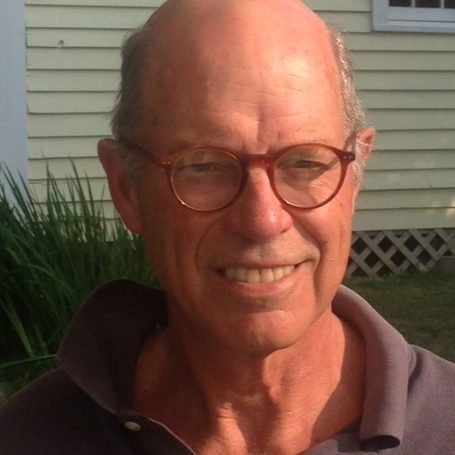
“It’s an unproven technology. There was no system somewhere else in the world using each of those technological elements that we could draw experience from and say it does work or doesn’t,” said board President Chamberlain.
Islanders are still interested in renewable energy. Carroll switched the company’s energy supplier so the power is generated by a hydroelectric facility in Lewiston, which he said has appeased some of those who wanted to incorporate renewables.
However, new estimates to replace the cable are projected to be much lower than the $1.7 million that was initially forecast, and the board is also looking at ways to reduce the 20% of power that’s lost by the time it comes from the mainland and distributed on the island. Those losses could be in the cable or somewhere on the island’s grid, said Carroll.
Wilson still regrets that he couldn’t get more residents on board with the microgrid and supercapacitor storage plan.
“It’s kind of a classic renewables question,” said Wilson, of the island’s experience. “We’re all in favor of renewables, until it becomes time to do something that might be out of the ordinary, or might be costly.”
Kay Aikin, founder of Dynamic Grid, who assisted Isle au Haut in designing the microgrid with storage, said she stands behind what the group came up with.
“In order for us to solve our climate crisis, we do have to get a little out of the box. We have to take risks,” she said. “We really tried hard at mitigating those risks with Isle au Haut. We understood that they were worried… It’s a shame that a good project didn’t happen.”
Microgrids of the kind the board was considering are still “an experiment that needs to happen in the world as we move away from fossil fuels, and toward renewable energy,” said Board President Chamberlain.
“We need to develop storage systems that will work not only in small, remote, rural locations like ours,” he continued. “But the feeling was that that was risky, to have it be the sole source of power for our very small community. And so we came back to the feeling, the strong feeling, that we needed to maintain a connection to the mainland.”

